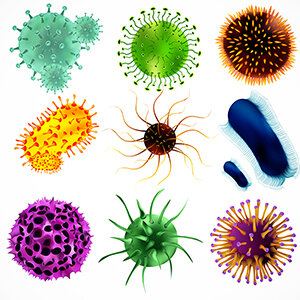Endnotes: What Will Caltech Accomplish in the Next 100 Years?
Open a campus on the moon. See beyond the Big Bang. Beat Harvey Mudd in football.
Woodrow Wilson (PhD ’70), San Marcos, CA
Be the first elite institution that achieves truly diverse (on all dimensions) faculty and student body.
Julia Ma (BS ’06), San Francisco, CA
Caltech will show how to scale up quantum computers using a modular approach. Caltech will also contribute an answer to the foundational question in physics "What is the meaning of Quantum Mechanics?"
James Davis (BS ’62), Santa Barbara, CA
Scientifically, Caltech will detect gravitational waves from the merger of supermassive black holes and understand (if not discover new) physics associated with the energetic phenomenon. Socially, Caltech will break the barrier and reach gender and racial equity among its student body, faculty, and staff.
Vivian U (BS ’06), La Habra Heights
Develop cellular and nanotechnology to modify embryos to repair birth defects in utero.
CJ Beegle (BS ’82), Trondheim, Norway
Achieve renown for the internal effectiveness and external impact of Caltech’s alumni community, as well as continuing renown for the effectiveness and impact of Caltech’s research and teaching.
Thomas J. Buckholtz (BS ’67), Portola Valley, CA
Have the first UNDERGRADUATE Nobel Prize winner - thanks to CalTech's engagement of undergrads in research
Larry Oliver (BS ’65), Charlotte, NC
Become a leading center, and a science clearing house, for reversing global warming. Just wishing.
Lowell Hill, Playa del Ray, CA
I believe Caltech will substantially improve biomedical engineering devices, including nanomachines to fight diseases and physical disabilities.
John Haworth (BS ’61), Reseda, CA
My hope is that Caltech will become a global leader in "moon shot" science; ambitious projects that require not only the expertise of top-class individual researchers, but sophisticated management of the Institute's best brains working across diverse fields to achieve bold, audacious goals. That will require a new portfolio of management skills: recruiting and retaining great people; resourcing and directing large-scale projects; and engaging future generations with the power of science through brilliant communication about our discoveries. The new $750 million environmental sustainability project would be a great starting point. Let's aim to be the world's best in science leadership and all else will follow.
Melody McLaren (BS ’77), Potters Bar, UK
Nuclear fusion will provide useful power. Every person's genome will be known; techniques will be developed to correct individual genetic defects. Quantum computers will work. The human brain will be largely but not completely understood. AI will control most of society, but men will still have the off switch! Protons, nuclei, and complex molecules such as DNA and proteins will routinely be computed by supercomputers. Computers will have data about everything about everyone in the whole world. Global warming and human activity will continue to decimate thousands of species in a great mass extinction—sorry about that. I sincerely hope that we don't blow ourselves up.
Ronald Remmel (BS ’65), West Bend WI
Have a President who is not a white male.
Andrew Cockburn (BS '74), Morgantown, WV
First, discover how DNA and RNA came to be, complete with the machinery for copying into proteins.
Second, explain the molecular and genetic mechanisms by which life arose and formed eukaryotic cells. Was this near geothermal ocean vents, powered by sulfur or heat?
Third, describe how life evolved into prokaryotic cells and free DNA or RNA, as in virus and phages. Then how the transition into oxygen-based life as we have now, happened.
Fourth, explain the resolution or proven irresolution of general relativity and quantum mechanics.
Fifth, provide an answer to the question: if the universe is infinite, what is its cardinality?
Sixth, discover if there is or was life on Mars, or elsewhere in our solar system, such as on a water world like Europa.
Seventh, ascertain whether there is someone out there aware and trying to communicate with us, or any other entity so aware?
Eighth, move forward in the evolution of and constraints on the feats and limits of artificial intelligence, aware of moral consequences.
Ninth, develop cost-effective and carbon-capturing technologies to take back global warming.
I wish I could live long enough to see it all.
Terrill (Tim) Hendrickson (BS ’67), Bothell, WA
Create the first artificial brain.
Amarbold Batzorig (BS ’19), McLean, VA
Caltech researchers will find ways to save the planet from destruction caused by human mistakes.
Richard Short (BS ’73), El Cajon, CA
Invent warp drive.
David Peisner (BS ’74), Harrisburg, PA
Today, many branches of science, engineering and technology still reside in their own relatively separated “silos” of knowledge. It would be a desirable vision to broaden and interconnect these separated systems of knowledge and learning, allowing scientists and engineers across many disciplines to leverage and build upon the work of others in a more synergistic way. Many “aha moments” could emerge from learning about and understanding the breakthroughs of others, and then incorporating their results into one’s own research. And “the whole” of such an interconnected system could become so much more significant than the sum of its individual parts.
Neil Gallensky (MS ’83), Westminster, CO
Caltech will become a major source of knowledge on science issues for laymen. Rather than the deep insights of Caltech professors being accessible largely to other scientists and engineers, professors will begin to provide relatively short answers (with links to the details) for the digital assistants we will all use to access information. The use of human language to ask questions encourages crisp answers, not a list of web sites—a conversation, not a reference list. With misinformation a constant challenge, the credibility of Caltech can be brought to providing balanced answers to critical scientific questions.
William Meisel (BS ’64)
Caltech will discover renewable energy sources to help curtail global warming and develop electronic devices that will run on the power sources available in the surrounding nature. Caltech will also enable breakthroughs to develop cures for AIDS and neurodegenerative diseases.
Ardsher Ahmed (MS ’86), San Jose, CA
People living on Mars.
Cures for Alzheimer's and Parkinson's diseases.
Average US life span will increase to 105.
Robert Clayton (MS ’67), Scottsdale, AZ
“Describe what caused the Big Bang and demonstrate whether the origin of creation will remain mysterious or explainable.”
Alain Delsupexhe (MS ’80), Paris, France
Discover life outside the solar system.
James Wolfenbarger (PhD ’90), Rialto, CA
People often associate Caltech with stereotypical notions of research in physics and mathematics. In the future, I believe that the multidisciplinary, collaborative science conducted by people like Nobel laureate/chemical engineer Frances Arnold, and Microbiologist Dianne Newman, will also push boundaries in medical fields. Their research will result in better treatments for debilitating diseases like autoimmune disorders, cystic fibrosis, and other chronic illnesses.
Rebecca Witkosky (PhD ’19), Los Angeles, CA
Caltech has done so much to enlighten us on the history of the cosmos and the nature of our solar system, but especially of Planet Earth, that I feel confident it will use that knowledge plus its path-breaking insights into both the basic and the applied sciences from physics to biology to genetic engineering that in the next 100 years the Institute will play a major role in building a better future for humanity by finding solutions to address climate change while also making key discoveries to conquer the chronic conditions of aging including diabetes, dementia, cancer, and cardiovascular disease. No small order for a tiny yet incredibly talented group of individuals. Go Beavers!
David Mog (PhD ’70), Arlington, VA
It will be a moot point when the Threshold [General Artificial Intelligence] is reached and soon thereafter the Singularity.
Alvah Strickland (MS ’65), Honolulu, HI
Caltech will lead the creation of the information industry after CMOS, setting the technology and architecture for 2030 to 2070.
Phil Neches (PhD ’73), Summit, NJ
Caltech will seed society with thousands more critical thinkers who will find ways to mitigate climate change, population pressure, water scarcity, and other existential threats while preserving the essentials of the human condition. I bet a few really exciting technology-based toys will be invented as well. I hope campus life survives much as it is today.
Elton Kaufmann (PhD ’69), Naperville, IL
With the recent $750 million Resnick donation, if Caltech can soon find major breakthroughs to avert global climate disaster, that may be the most significant accomplishment. Otherwise, nothing else may matter...
Dave Hermeyer (BS ’70), San Francisco, CA
Achieve sustained gender parity and greater diversity among faculty and the student body.
Diverse communities are successful communities! Let’s not forget the social progress aspect of sustaining excellence in innovation and technological advancement!
Stephanie Reyes (BS ’16), Chicago, IL
We'll find planet 9 … or not!
We'll figure out what dark matter and dark energy are.
Quantum computing will be in the PC on your desktop.
David Shaffer (PhD ’74), Flagstaff, AZ
Linus Pauling was right, it’s a mixture of biology and chemistry that will unlock the secrets.
Caltech laboratories will be distributed all over in our solar system to monitor the cosmos and to search for environments suitable for sustained living.
Zoltan Tokes (PhD ’70)
1. I anticipate that there will be a unified field theory of physics that integrates the standard model of physics and gravitation. Just as there is attraction and repulsion in electromagnetic fields, we may discover repulsion effects in gravitation. This might be relevant as an enabler for space travel.
2. Isn't it remarkable that thousands of mathematicians all over the world, and throughout history, have a common understanding of what constitutes a correct mathematical proof, without necessarily having been exposed to a formal understanding of what a correct mathematical argument is? This suggests that there may be common neurobiological pathways which are invoked when a mathematician walks through a mathematical proof. An understanding of these pathways may lead to a flowering and renaissance in mathematical discovery. Some very preliminary work in this area has already begun.
3. The Turing Test was invented by Alan Turing to judge whether a computer can be called a "thinking machine." Is it possible that the intelligent machines we are building will become so intelligent that they may be able to conceive and execute a "Reverse Turing Test" designed to find out whether humans are truly "intelligent"?
Sandeep Jain (BS ’91), Noida, Uttar Pradesh, India
Bring us to Mars.
Roger Ng (BS ’85), Hong Kong
When I started at Caltech, we were still using sliderules. As juniors, we had early digital hand calculators and primitive interactive computer terminals (CITRAN). Fifty years later, students have powerful smartphones, laptops, and tablets, as well as access to a wealth of cloud computing resources and the global internet. So I envision that in another 50 years, students will either have physical humanoid classmates or virtual AI assistants that co-learn with them. With 50 years of that kind of advanced cognition and investigation, Caltech will likely discover how the human brain works , the origin of the genetic code, the origin of the universe and, perhaps, the meaning of life, the universe and everything.
Tad Reynales (BS ’72), Solana Beach, CA
Remain "Caltech"
Saif Hussain (BS ’78), Woodland Hills, CA



![shutterstock_1158771283 [Converted] copy.jpg](https://images.squarespace-cdn.com/content/v1/586ec16bb3db2b558ebfec60/1584994339255-2R1TOFXDCRK17ACFQXE2/shutterstock_1158771283+%5BConverted%5D+copy.jpg)
